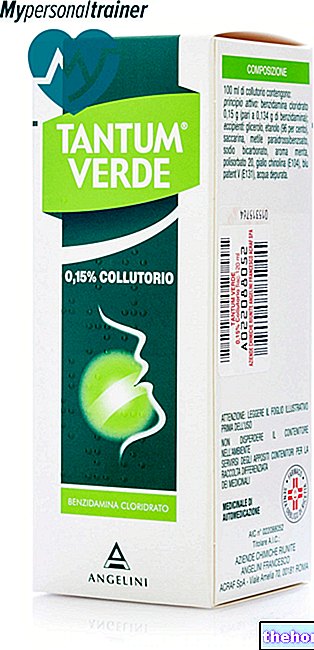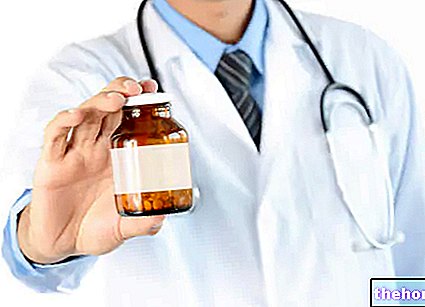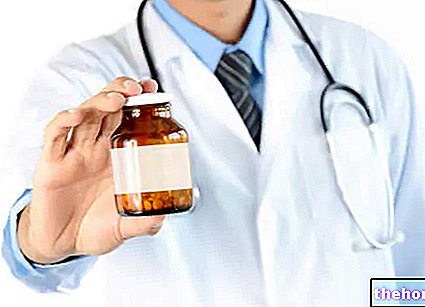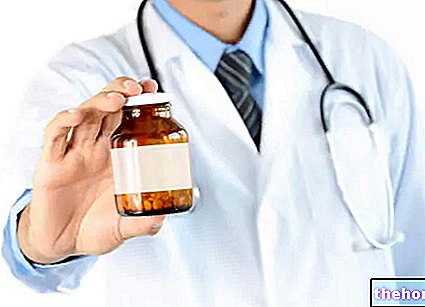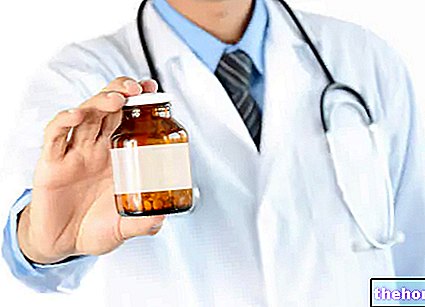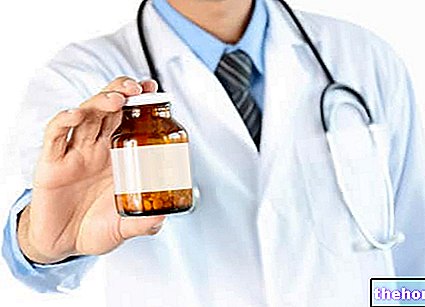Active ingredients: Thiocolchicoside
MIOTENS 4 mg / 2 ml solution for injection
Why is Miotens used? What is it for?
PHARMACOTHERAPEUTIC CATEGORY
Muscle relaxant with central action.
THERAPEUTIC INDICATIONS
Adjuvant treatment of painful muscle contractures in acute spinal disorders in adults and adolescents aged 16 years and over.
Contraindications When Miotens should not be used
thiocolchicoside should not be used
- in patients with flaccid paralysis, muscle hypotonia.
- in patients with hypersensitivity to the active substance or to any of the excipients listed in the "Composition" section
- throughout the pregnancy period, in case of suspected pregnancy and if pregnancy is planned
- while breastfeeding
- in women of childbearing potential who are not using contraceptives.
Precautions for use What you need to know before taking Miotens
The dosage should be suitably reduced in case of side effects. Thiocolchicoside can precipitate seizures in patients with epilepsy or in those at risk of seizures.
Strictly respect the doses and duration of treatment indicated in the paragraph "Dose, method and timing of administration"
Interactions Which drugs or foods can change the effect of Miotens
None known.
Warnings It is important to know that:
Preclinical studies have shown that one of the metabolites of thiocolchicoside (SL59.0955) induced aneuploidy (alteration in the number of chromosomes in dividing cells) at concentrations close to the human exposure observed with doses of 8 mg twice daily per os. L "aneuploidy is considered to be a risk factor for teratogenicity, embryo / fetal toxicity, spontaneous abortion, impaired male fertility and a potential risk factor for cancer. recommended or long-term use should be avoided (see section "Dose, method and time of administration").
Patients should be carefully informed about the potential risk of a possible pregnancy and about effective contraceptive measures to be followed.
USE DURING PREGNANCY AND BREASTFEEDING
Pregnancy
There are limited data on the use of thiocolchicoside in pregnant women. Therefore, the potential risks to the embryo and fetus are unknown. Animal studies have shown teratogenic effects. MIOTENS 4 mg / 2 ml solution for injection is contraindicated during pregnancy and in women of childbearing potential not using contraceptives (see section "Contraindications").
Feeding time
The use of thiocolchicoside is contraindicated during lactation as it is secreted in breast milk (see section "Contraindications").
Fertility
In a fertility study conducted in rats, no impairment of fertility was observed at doses up to 12 mg / kg, i.e. at dose levels inducing no clinical effect. Thiocolchicoside and its metabolites exert aneugenic activity at different concentration levels, which is a risk factor for impaired human fertility.
EFFECTS ON THE ABILITY TO DRIVE VEHICLES OR USE MACHINERY
Although the occurrence of drowsiness is to be considered a very rare occurrence, it is still necessary to take this possibility into account.
Keep this medicine out of the reach of children
Dosage and method of use How to use Miotens: Dosage
The recommended and maximum dose is 4 mg every 12 hours (8 mg per day). The duration of the treatment is limited to 5 consecutive days.
Higher than recommended doses or long-term use should be avoided (see sections special warnings and precautions for use).
Pediatric population
MIOTENS 4 mg / 2 ml solution for injection i.m. It should not be used in children and adolescents under 16 years of age due to safety concerns.
Method of administration
Intramuscularly.
Aseptic technique should be used. Open the vials along the dotted line. The solution from each vial should be introduced into the syringe and injected.
Overdose What to do if you have taken too much Miotens
OVERDOSE
No cases of overdosing have been described in the literature.
If you have taken too much Miotens, notify your doctor immediately or go to the nearest hospital.
FORGOTTEN DOSE
Do not take a double dose to make up for a forgotten dose.
If you have any questions about the use of this medicine, ask your doctor or pharmacist
Side Effects What are the side effects of Miotens
Disorders of the immune system
Hypersensitivity reactions such as:
Uncommon: pruritus,
Rare: urticaria,
Very rare: hypotension,
Not known: angioedema and anaphylactic shock
Nervous system disorders
Common: somnolence,
Rare: passenger agitation and drowsiness,
Not known: malaise with or without vasovagal syncope in the minutes following intramuscular administration, convulsions
Gastrointestinal disorders
Common: diarrhea, gastralgia,
Uncommon: nausea, vomiting
Rare: heartburn
Hepatobiliary disorders
Not known: cytolytic and cholestatic hepatitis
Skin and subcutaneous tissue disorders
Uncommon: allergic skin reactions.
The patient is invited to report any undesirable effect not described in the package leaflet to his doctor or pharmacist.
Reporting of side effects
If you get any side effects, talk to your doctor or pharmacist. This includes any possible side effects not listed in this leaflet. Side effects can also be reported directly via the national reporting system at “www.agenziafarmaco.gov.it/it/responsabili.” By reporting side effects you can help provide more information on the safety of this medicine.
Expiry and Retention
Check the expiration date indicated on the package.
The expiry date indicated refers to the product in intact packaging, correctly stored.
WARNING: Do not use the medicine after the expiry date indicated on the package.
No special storage precautions
Composition and pharmaceutical form
COMPOSITION
Each 2 ml vial contains: active ingredient: thiocolchicoside 4 mg Excipients: sodium chloride, monobasic sodium phosphate monohydrate, disodium phosphate dodecahydrate, water for injections.
PHARMACEUTICAL FORM AND CONTENT
Solution for injection for intramuscular use in packs of 6 ampoules for the dose of 4 mg / 2 ml.
Source Package Leaflet: AIFA (Italian Medicines Agency). Content published in January 2016. The information present may not be up-to-date.
To have access to the most up-to-date version, it is advisable to access the AIFA (Italian Medicines Agency) website. Disclaimer and useful information.
01.0 NAME OF THE MEDICINAL PRODUCT
MIOTENS 4 MG / 2 ML SOLUTION FOR INJECTION I.M.
▼ Medicinal product subject to additional monitoring. This will allow the rapid identification of new safety information. Healthcare professionals are asked to report any suspected adverse reactions. See section 4.8 for information on how to report adverse reactions.
02.0 QUALITATIVE AND QUANTITATIVE COMPOSITION
Injectable solution: each vial contains: active principle: thiocolchicoside 4 mg.
03.0 PHARMACEUTICAL FORM
Solution for injection for intramuscular use.
04.0 CLINICAL INFORMATION
04.1 Therapeutic indications
Adjuvant treatment of painful muscle contractures in acute spinal disorders in adults and adolescents aged 16 years and over.
04.2 Posology and method of administration
Dosage
The recommended and maximum dose is 4 mg every 12 hours (8 mg per day). The duration of the treatment is limited to 5 consecutive days.
Higher than recommended doses or long-term use should be avoided (see section 4.4).
Pediatric population
MIOTENS 4 mg / 2 ml solution for injection i.m. it should not be used in children and adolescents under 16 years of age due to safety concerns (see section 5.3).
Method of administration
Intramuscularly.
For instructions on use of the medicinal product before administration, see section 6.6
04.3 Contraindications
Flaccid paralysis, muscle hypotonia.
Thiocolchicoside should not be used:
- in patients with hypersensitivity to the active substance or to any of the excipients listed in section 6.1
- throughout the pregnancy period
- during breastfeeding
- in women of childbearing age who are not using contraceptives.
04.4 Special warnings and appropriate precautions for use
The dosage should be suitably reduced in case of side effects.
Thiocolchicoside can precipitate seizures in patients with epilepsy or in those at risk of seizures.
Preclinical studies have shown that one of the metabolites of thiocolchicoside (SL59.0955) induced aneuploidy (alteration in the number of chromosomes in dividing cells) at concentrations close to the human exposure observed with doses of 8 mg twice daily orally (see section 5.3). Aneuploidy is considered to be a risk factor for teratogenicity, embryo / fetal toxicity, spontaneous abortion, impaired male fertility and a potential risk factor for cancer. at doses higher than the recommended dose or long-term use should be avoided (see section 4.2).
Patients should be carefully informed about the potential risk of a possible pregnancy and about effective contraceptive measures to be followed.
04.5 Interactions with other medicinal products and other forms of interaction
None known.
04.6 Pregnancy and lactation
Pregnancy
There are limited data on the use of thiocolchicoside in pregnant women. Therefore, the potential risks to the embryo and fetus are unknown.
Animal studies have shown teratogenic effects (see section 5.3).
MIOTENS 4 mg / 2 ml solution for injection i.m is contraindicated during pregnancy and in women of childbearing potential who are not using contraceptives (see section 4.3).
Feeding time
The use of thiocolchicoside is contraindicated during lactation as it is secreted in breast milk (see section 4.3).
Fertility
In a fertility study conducted in rats, no impairment of fertility was observed at doses up to 12 mg / kg, i.e. at dose levels inducing no clinical effect. Thiocolchicoside and its metabolites exert aneugenic activity at different concentration levels, which is a risk factor for impaired human fertility (see section 5.3).
04.7 Effects on ability to drive and use machines
Although the occurrence of drowsiness is to be considered a very rare occurrence, it is still necessary to take this possibility into account.
04.8 Undesirable effects
Disorders of the immune system
Hypersensitivity reactions such as:
Uncommon: itching
Rare: urticaria
Very rare: hypotension
Not known: angioedema and anaphylactic shock
Nervous system disorders
Common: somnolence
Rare: passenger agitation and drowsiness
Not known: malaise with or without vasovagal syncope in the minutes following intramuscular administration, convulsions
Gastrointestinal disorders
Common: diarrhea, gastralgia
Uncommon: nausea, vomiting
Rare: heartburn
Hepatobiliary disorders
Not known: cytolytic and cholestatic hepatitis
Skin and subcutaneous tissue disorders
Uncommon: allergic skin reactions.
Reporting of suspected adverse reactions
Reporting of suspected adverse reactions occurring after authorization of the medicinal product is important as it allows continuous monitoring of the benefit / risk balance of the medicinal product. Healthcare professionals are asked to report any suspected adverse reactions via the national reporting system. "Street address www.aifa.gov.it/responsabili
04.9 Overdose
Cases of overdose are not known or have been reported in the literature.
05.0 PHARMACOLOGICAL PROPERTIES
05.1 Pharmacodynamic properties
Thiocolchicoside is a semisynthetic sulfur derivative of colchicoside, a natural glycoside of colchicum, endowed with myorelaxant activity and devoid of curare-like effects.
Some works have shown a selective agonist activity on GABA-ergic and glycinergic receptors. These actions can explain the effect of thiocolchicoside both in reflex, rheumatic and traumatic contractures, and in spastic ones of central origin.
Thiocolchicoside does not alter voluntary motility, nor does it interfere with the respiratory muscles. Finally, it has no effects on the cardiovascular system.
05.2 "Pharmacokinetic properties
Absorption
- After intramuscular administration, Thiocolchicoside Cmax occurs in 30 minutes and reaches values of 113 ng / ml after a 4 mg dose, and 175 ng / ml after an 8 mg dose. The corresponding AUC values are 283 and 417 ng.h / mL, respectively.
The pharmacologically active metabolite SL18.0740 is also observed at lower concentrations, with a Cmax of 11.7 ng / ml occurring 5 hours post dose and an AUC of 83 ng.h / ml.
No data are available for the inactive metabolite SL59.0955.
- After oral administration, thiocolchicoside is not detected in plasma. Only two metabolites are observed: the pharmacologically active metabolite SL18.0740 and an inactive metabolite SL59.0955. For both metabolites, maximum plasma concentrations occur 1 hour after thiocolchicoside administration. After a single oral dose of 8 mg of thiocolchicoside the Cmax and AUC of SL18.0740 are respectively about 60 ng / ml and 130 ng.h / ml. For SL59.0955 these values are much lower: Cmax about 13 ng / ml and AUC values are between 15.5 ng.h / ml (up to 3h) and 39.7 ng.h / ml (up to 24h).
Distribution
The apparent volume of distribution of thiocolchicoside is estimated to be around 42.7 L after intramuscular administration of 8 mg. No data are available for both metabolites.
Biotransformation
After oral administration, thiocolchicoside is first metabolised to 3-demethylthiocolchicine aglycone or SL59.0955. This transformation occurs mainly by intestinal metabolism and explains the lack of unchanged circulating thiocolchicoside with this route of administration.
The metabolite SL59.0955 is then glucuroconjugated to SL18.0740 which has an equipotent pharmacological activity to thiocolchicoside and therefore supports the pharmacological activity after oral administration of thiocolchicoside.
The metabolite SL59.0955 is also demethylated to didemethyl-thiocolchicine.
Elimination
- After intramuscular administration the apparent t½ of thiocolchicoside is 1.5 hours and the plasma clearance 19.2 l / h.
- After oral administration, the total radioactivity is excreted mainly in the faeces (79%), while the urinary excretion accounts for only 20%. Unchanged thiocolchicoside is excreted neither in the urine nor in the faeces. The metabolites SL18.0740 and SL59.0955 they are found in urine and faeces, while didemethyl-thiocolchicine is recovered only in faeces.
After oral administration of thiocolchicoside, the metabolite SL18.0740 is cleared with an apparent t½ of 3.2 to 7 hours and the metabolite SL59.0955 has a mean t½ of 0.8 hours.
05.3 Preclinical safety data
The thiocolchicoside profile was evaluated in vitro And in vivo after parenteral and oral administration.
Thiocolchicoside was well tolerated after oral administration for up to 6 months in both the rat and the non-human primate when administered at repeated doses of less than or equal to 2 mg / kg / day in the rat and less than or equal to 2.5 mg / kg. / day in the non-human primate, and intramuscularly in the primate at repeated doses up to 0.5 mg / kg / day for 4 weeks.
At high doses, after acute oral administration, thiocolchicoside induced emesis in dogs, diarrhea in rats and convulsions in both rodents and non-rodents.
After repeated administration, thiocolchicoside induced oral gastrointestinal disturbances (enteritis, emesis) and intramuscular emesis.
Thiocolchicoside did not in itself induce gene mutation in bacteria (Ames test), chromosomal damage in vitro (chromosomal aberration test in human lymphocytes) and chromosomal damage in vivo (mouse bone marrow micronucleus test after intraperitoneal administration).
The major glucuroconjugated metabolite SL18.0740 did not induce gene mutation in bacteria (Ames test), however it did induce chromosomal damage in vitro (human lymphocyte micronucleus test) and chromosomal damage in vivo (mouse bone marrow micronucleus test after oral administration). Micronuclei were predominantly from chromosomal loss (centromere-positive micronuclei after centromere FISH staining), suggesting aneugenic properties. The aneugenic effect of the metabolite SL18.0740 was observed at concentrations in the test in vitro and plasma exposures (AUC) in the test in vivo, higher (10-fold greater based on AUC) than those observed in human plasma at therapeutic doses.
The aglycone metabolite (3-demethylthiocolchicine-SL59.0955), which is formed mainly after oral administration, induced chromosomal damage in vitro (human lymphocyte micronucleus test) and chromosomal damage in vivo (rat bone marrow micronucleus test after oral administration). Micronuclei were predominantly from chromosomal loss (centromere micronuclei positive after FISH or CREST staining of the centromere), suggesting aneugenic properties. The aneugenic effect of SL59.0955 was observed at concentrations in the test in vitro and at exposures in the test in vivo close to those observed in human plasma at therapeutic doses of 8 mg twice daily orally. The aneugenic effect in dividing cells can cause aneuploid cells. Aneuploidy is an alteration in the number of chromosomes and loss of heterozygosity, which is recognized as a risk factor for teratogenicity, embryo toxicity / miscarriage, impaired male fertility , when it concerns germ cells, and a potential risk factor for cancer when it concerns somatic cells. The presence of the aglycone metabolite (3-demethylthiocolchicine-SL59.0955) after intramuscular administration has never been evaluated, so its formation through this route of administration cannot be excluded.
In the rat, an oral dose of 12 mg / kg / day of thiocolchicoside resulted in major malformations along with fetal toxicity (growth retardation, embryo death, altered rate of sex distribution). The no-toxic effect dose was 3 mg / kg / day.
In rabbits, thiocolchicoside showed maternal toxicity starting at 24 mg / kg / day. In addition, minor anomalies (supernumerary ribs, delayed ossification) were observed.
In a fertility study in rats, no impairment of fertility was observed at doses up to 12 mg / kg / day, i.e. dose levels inducing no clinical effect.
Thiocolchicoside and its metabolites exert aneugenic activity at different concentration levels, this is recognized as a risk factor for impaired human fertility.
Carcinogenic potential has not been evaluated.
06.0 PHARMACEUTICAL INFORMATION
06.1 Excipients
Sodium chloride, monobasic sodium phosphate monohydrate, disodium phosphate dodecahydrate, water for injections.
06.2 Incompatibility
None known. It is possible the extemporaneous combination in syringe of MIOTENS solution for injection with specialty for parenteral administration containing: tenoxicam, piroxicam, ketoprofen, ketorolac trometamine, diclofenac sodium, lysine acetylsalicylate, betamethasone disodium phosphate, cyanocobalamin (vitamin B12) and complexes B6 and B12.
06.3 Period of validity
24 months. The expiry date indicated refers to the product in intact and correctly stored packaging.
06.4 Special precautions for storage
No special precautions are required for the storage of MIOTENS solution for injection.
06.5 Nature of the immediate packaging and contents of the package
6 ampoules for the dose of 4 mg / 2 ml.
06.6 Instructions for use and handling
Aseptic technique should be used. Open the vials along the dotted line. The solution from each vial should be introduced into the syringe and injected.
07.0 MARKETING AUTHORIZATION HOLDER
Dompé Pharmaceuticals S.p.A.
Via San Martino 12
20122 Milan
08.0 MARKETING AUTHORIZATION NUMBER
A.I.C. n. 034424010
09.0 DATE OF FIRST AUTHORIZATION OR RENEWAL OF THE AUTHORIZATION
February 27, 2007
10.0 DATE OF REVISION OF THE TEXT
September 2015

